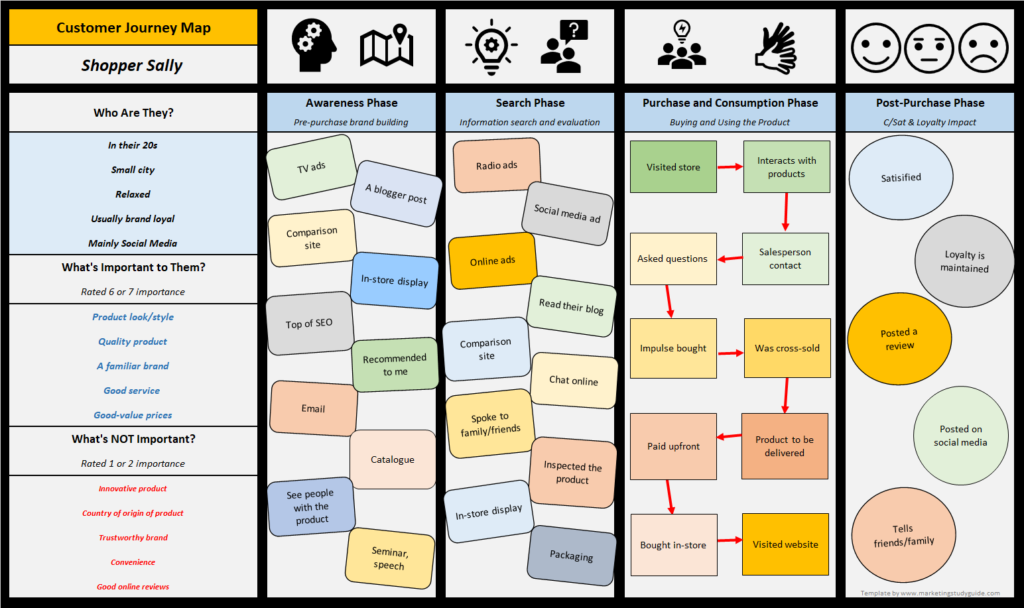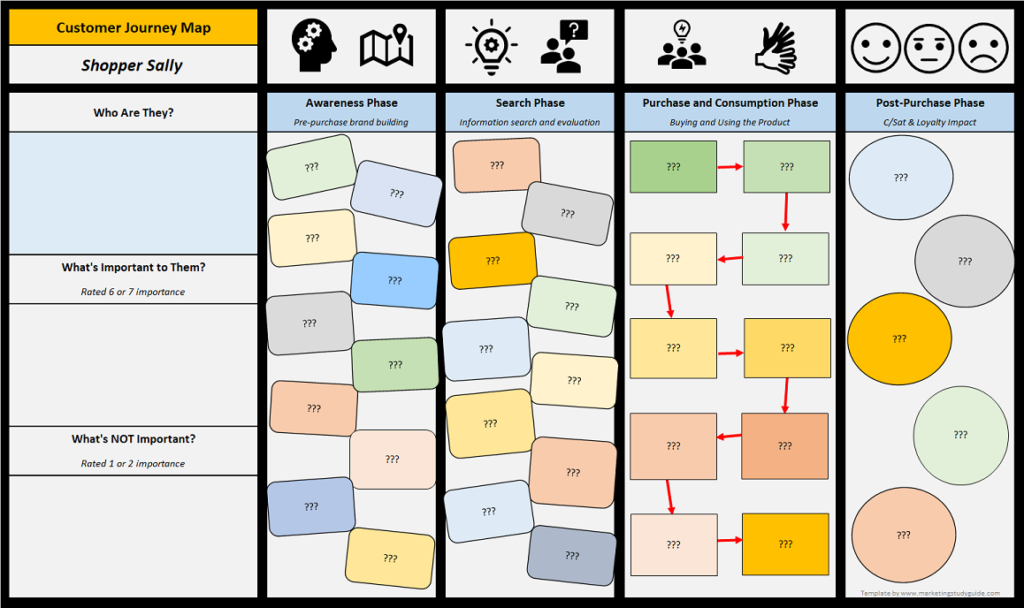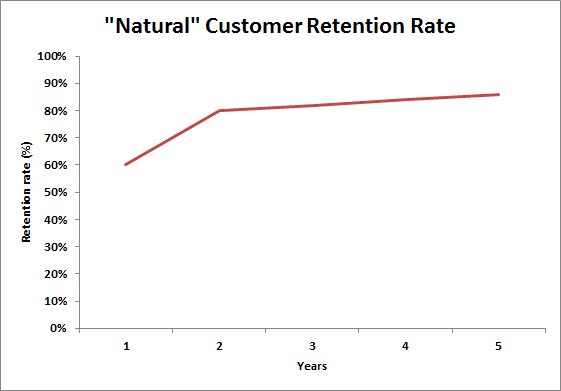CJM a Helpful Analytical Tool for CLV
Customer journey mapping is a common analytical approach to understand the steps, processes, interactions, and brand touchpoints for the progression of a non-customer to a loyal advocate.
These are the same steps that a brand needs to progress through in order to maximize customer lifetime value: from new customer acquisition to highly loyal supportive customer (and, of course, all the steps in between).
Example CJM
Here is an example customer journey map…
As you can see, for each brand persona (personified representative customer of a target market), there are four each phases of customer development”
- Awareness phase = before the consumer has a desire/interest in buying the product
- Search phase = when the consumer is seeking to buy the product and is seeking and reviewing information
- Purchase and consumption phase = the process of the consumer finally buying (after evaluation) and then consuming the product
- And post-purchase = what happens to the consumer – in terms of customer satisfaction, attitude, and brand loyalty after their purchase
For more information – please refer to this external article on the top-level phases of the customer journey.
CJM Free Excel Template
Designing a customer journey map – like the one above – is now super easy thanks to this free Excel template, available for download… customer-journey-map-maker
This is an easy-to-follow, drop-down menu template that can build a CJM within minutes – like the one shown above.
Here is an image of the starting “blank” CJM and underneath is a video of how to use the free customer journey map Excel template.
Further Academic Reading
Understanding Customer Experience Throughout the Customer Journey


